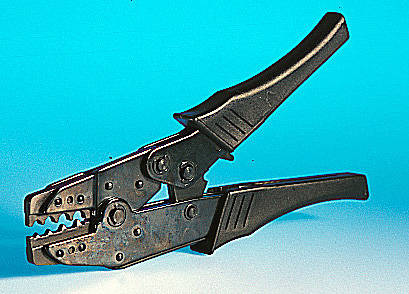I am just in the process of installing a new Bosch HBN13B251B Avantixx Built Under Double Electric Oven in our kitchen.
The electricians added in a cooker switch fed by 10mm^2 from the consumer unit when the house was rewired a few months ago. We have just got around to buying an oven, so I'm now fitting this.
I've got some 10mm^2 cable - connecting it to the switch was easy enough. But in the oven's connector block, the screw terminals just seem very inadequate for such a thick cable. Should I be soldering on terminals to the end of the cable, which are then themselves attached to the screw blocks or something??
I have actually got it connected by separating the 7 cores of the blue wire and then wrapping these around the screw - 4 on one side, 3 on the other. Then squishing them with pliers and then tightening the screw into the terminal. Then repeated all this for the brown wire. The earth was much easier.
This then looks like all the cores are forming a connection at the screw. As opposed to, say, only a couple of the cores making contact and the others floating about.
The electricians added in a cooker switch fed by 10mm^2 from the consumer unit when the house was rewired a few months ago. We have just got around to buying an oven, so I'm now fitting this.
I've got some 10mm^2 cable - connecting it to the switch was easy enough. But in the oven's connector block, the screw terminals just seem very inadequate for such a thick cable. Should I be soldering on terminals to the end of the cable, which are then themselves attached to the screw blocks or something??
I have actually got it connected by separating the 7 cores of the blue wire and then wrapping these around the screw - 4 on one side, 3 on the other. Then squishing them with pliers and then tightening the screw into the terminal. Then repeated all this for the brown wire. The earth was much easier.
This then looks like all the cores are forming a connection at the screw. As opposed to, say, only a couple of the cores making contact and the others floating about.


